
Nestled in the heart of Manhattan's exclusive Upper East Side, Dr. Konstantin Vasyukevich’s plastic surgery practice is a sanctuary for those seeking aesthetic rejuvenation. Located on a posh stretch of 79th Street, between Park and Madison, his clinic stands as a testament to the timeless elegance of this coveted neighborhood. Patients seek Dr. Konstantin's expertise, knowing that an appointment with him is a valuable opportunity. Renowned for his meticulous artistry and innovative approach, he has transformed the concept of facial rejuvenation. His patients' before-and-after photos speak volumes, capturing the seamless beauty and natural-looking results that have become his signature. For those fortunate enough to be in his care, a visit to Dr. Konstantin is an invitation to rediscover youth and confidence, sculpted at the hands of a master.
Dr. Konstantin's dedication to the field of facial plastic surgery is unmistakable. He chose early in his education to devote his training and research to becoming an expert in the aesthetics and anatomy of the face, believing a facial plastic surgeon's role occupies a unique place in cosmetic surgery. "Facial plastic surgery is the most demanding, the most challenging, and the most rewarding plastic surgery specialty," says Dr. Konstantin. "Other plastic surgery is important, but what sets the face apart is that you cannot hide it. You can wear clothes to hide other parts of the body, but your face is something that people see every day.”
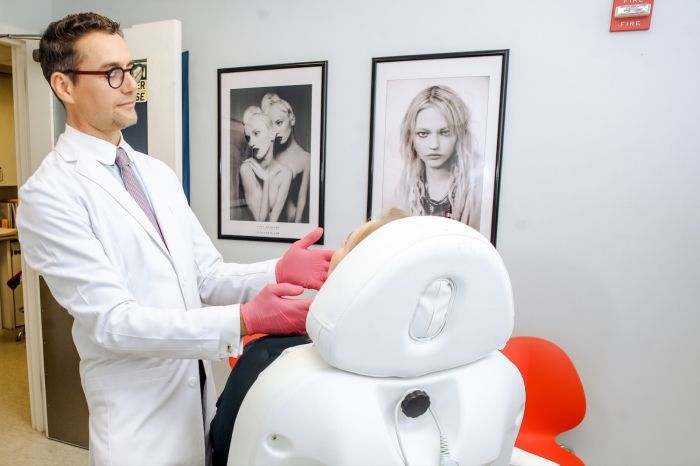
A top, double board-certified facial plastic surgeon who has performed 3000 facial plastic surgery procedures at his thriving practice, Dr. Konstantin combines a genuine passion for his craft with talent, technical skill, and an artist's aesthetic sense. Best known for innovation and expertise in facelift surgery, his consistently excellent results have earned him numerous accolades and loyal patients.
While he enjoys surgical privileges at the prestigious Lenox Hill Hospital, which is only a few blocks from his Manhattan practice, he performs the majority of his procedures at his office-based surgical center that's fully accredited by the American Association for Accreditation of Ambulatory Surgery Facilities.
JustLuxe was fortunate to meet with Dr. Konstantin at his serene 79th St. clinic in order to ascertain more about his practice. Here, in his own words, he elaborates on his expertise:
JL: What makes your specialty of facial plastic surgery so rewarding?
Dr. K: I can do something for people that can quite literally change their lives. Those who get breast implants or liposuction are certainly changed and often are more confident. But I see patients who come back after a procedure and they are radiating a new energy. They talk about looking 15 years younger, and they actually feel like they've got those years back.
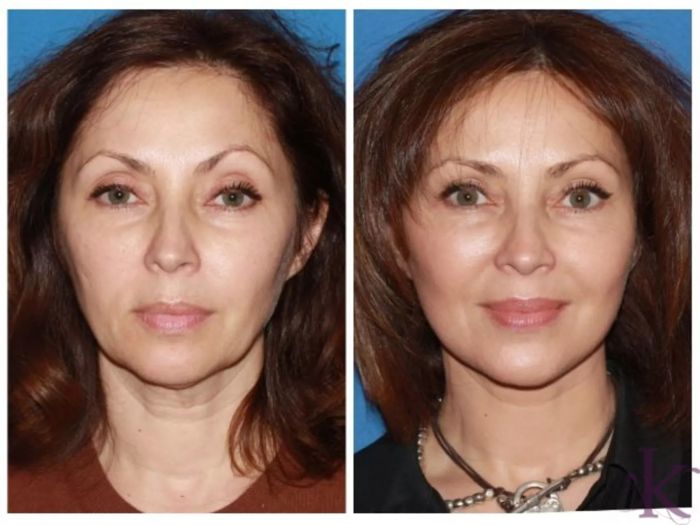
How do you build trust with a patient?
Honesty. Patients appreciate when you are honest with them. They understand that I am not going to tell them something that isn't accurate. I spend time with my patients during the consultation to make sure they are well informed and that they understand all the details about the procedures they want. The relationship between a facial plastic surgeon and the patient is very special. It requires tremendous trust.
How do you handle patients who want to look a specific way, such as to emulate a celebrity?
People often come in with preconceived notions about wanting to look like someone they've seen on the Internet or a famous celebrity. I explain that a facial plastic surgeon can't necessarily make them look like a different person nor would I want to. I listen to a patient's aesthetic goals, and we discuss if we can achieve that in a way that looks natural.
What is the best age at which to get a facelift?
There isn't really a specific age that is 'best' for a facelift. Even people in their 30s begin to see signs of aging that can make them appear much older than they are. Instead, what matters is whether patients have sagging jowls or a double chin that truly bothers them. If so, a facelift is an appropriate procedure.
How does someone know if they are a good candidate for a facelift?
There is a quick and easy test that you can perform at home to get an idea of whether or not a facelift would work for you. To see the effects of a facelift, stand in front of a mirror, put your fingers on the sides of the face about an inch outward from your ears, and lift the skin up and slightly back. If doing this lifts up sagging cheeks and smooths out the jowls, a facelift may be a good option for you. If not, you may want to re-consider a facelift surgery.
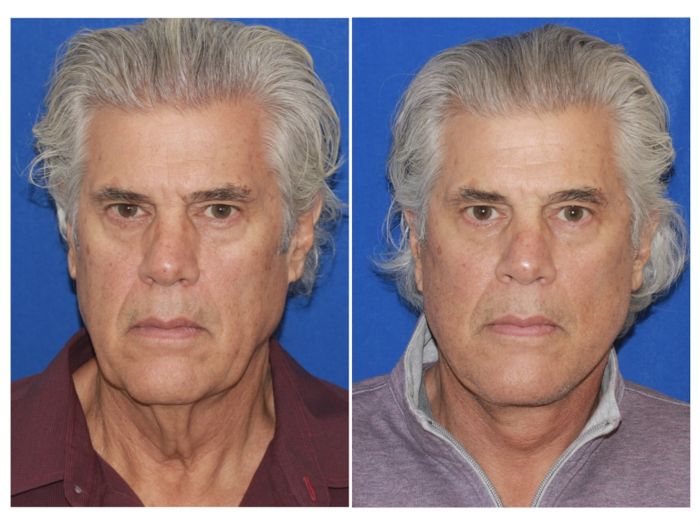
Do you use general anesthesia for a facelift?
I prefer not to use general anesthesia; local anesthesia with twilight sedation is my preferred method. I feel this type of anesthesia is safer and the recovery from it is faster than the traditional alternative.
What is the recovery time after a facelift?
I recommend taking at least 1-2 weeks off from work to recover from a facelift. After this time most external signs of recent surgery should fade, and people usually feel quite comfortable appearing in public. Although, complete healing from a facelift may take up to a year, the majority of patients are completely healed by 2-3 month after the surgery.
When should a patient be able to notice the result of their facelift?
It typically takes 1-2 weeks to start seeing the results of the facelift. However, as the healing process continues, the appearance of the face will continue to improve. I invite patients to come in for their picture follow up at two months after their surgery. At this point, I consider the results final.
How long do facelift results last?
A facelift can reset the clock of facial aging, making the face appear ten or even fifteen years younger. The effects of a facelift last, on average, for ten to fifteen years. A facelift can be done again if needed. It is not uncommon for a patient to have two facelifts in their lifetime: one (a mini face lift) in their 30s-40s and another (deep plane facelift) in their 50s-60s.
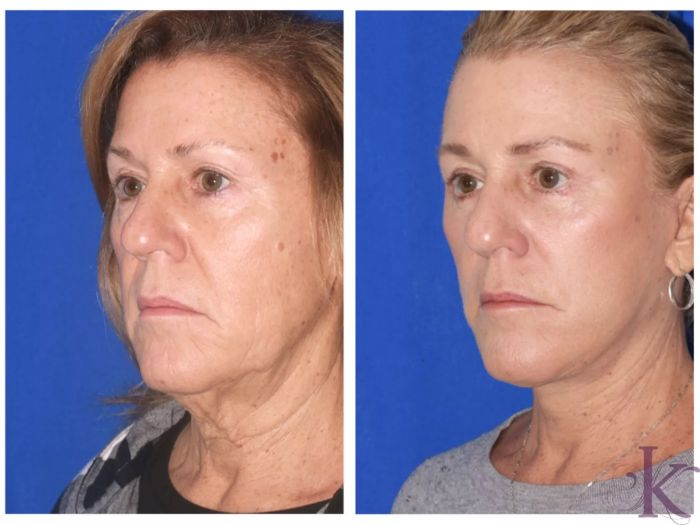
Should a patient perhaps try a non-surgical facelift first?
Non-surgical facelift could be an effective alternative to a surgical rejuvenation in younger patients. There are a number of minimally-invasive procedures that aim to replicate the effects of the facelift while avoiding the need for surgery. Treatments such as Ultherapy, Thermage, ThreadLift, and Liquid Facelift typically result in fairly subtle rejuvenating effects and shorter longevity than a surgical counterpart. Therefore, they would be the most effective in the early stages of facial aging and are primarily effective in patients of a younger age group.
Do you offer non-surgical treatments?
Absolutely. we offer injectable treatments, such as BOTOX® Cosmetic and fillers. I believe I can get the best outcomes, and I think my patients appreciate that. Although injectable procedures and other non-surgical treatments are less complicated than surgery, they still require someone with expertise who knows facial anatomy to ensure getting consistently excellent results.
The duration of a patient's New York stay can vary depending on whether their procedure is nonsurgical or surgical. Nonsurgical procedures such as dermal fillers or BOTOX® usually don't require an extended stay, and patients can travel shortly after their treatment. For surgical procedures such as a facelift, patients are required to stay a minimum of seven to 10 days. This allows sufficient healing time and Dr. Konstantin and his team the ability to monitor the patient's progress after surgery.
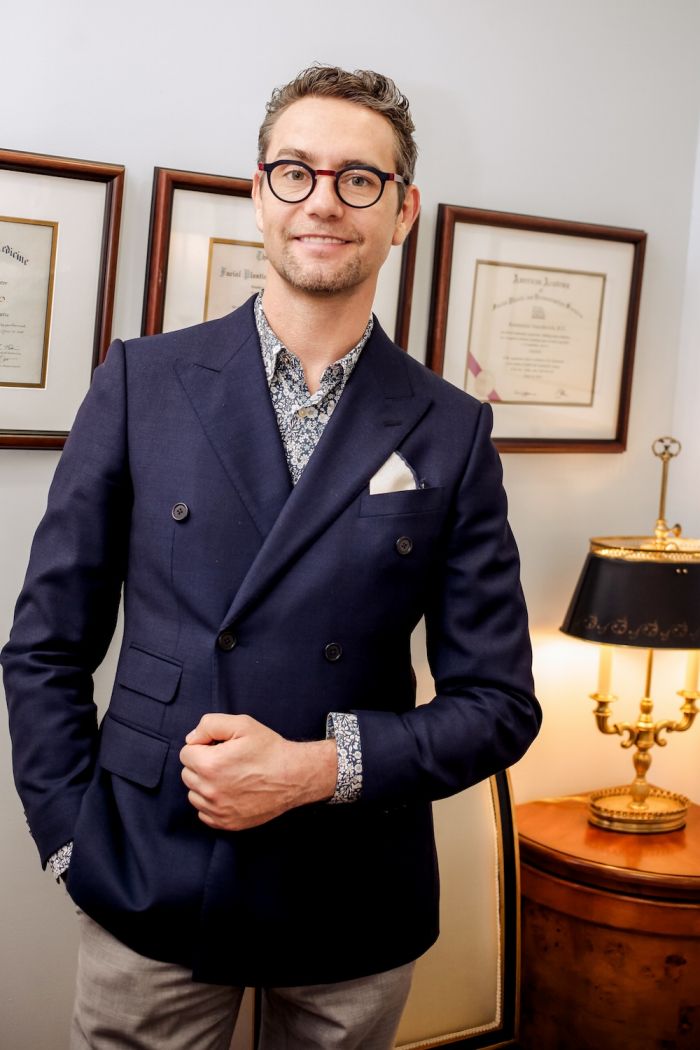
Photos courtesy of Dr. Konstantin Vasyukevich









